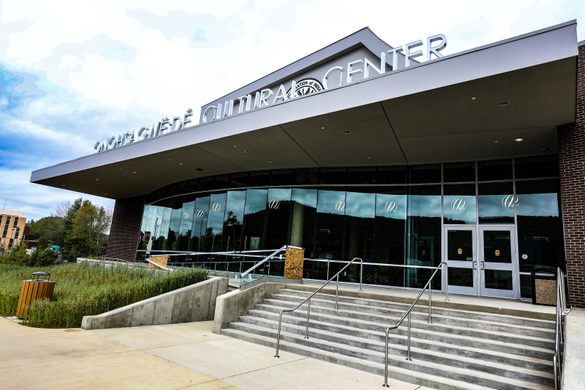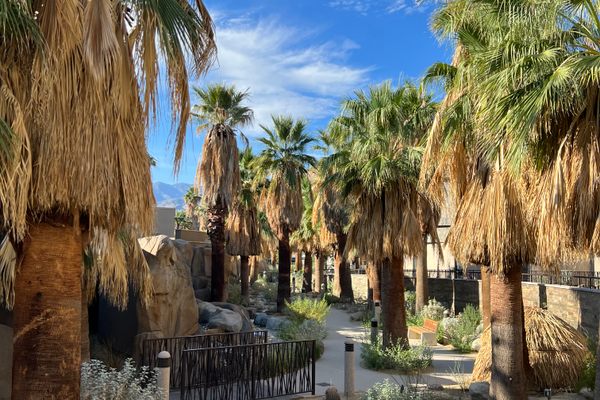AO Edited
Onöhsagwë:de’ Cultural Center
This museum pays tribute to the largest group in the Iroquois Confederacy.
Nestled between the Alleghany River and Alleghany State Park in Western New York’s Southern Tier, is a sprawling museum dedicated to the Seneca-Iroquois Nation. Named after a prominent Seneca singer and teacher, the 33,000 square foot Onöhsagwë:de’ Cultural Center opened in 2018.
The Seneca Nation, or more appropriately Onödowáʼga (“Great Hill People”), is one of six nations comprising the Iroquois Confederacy, which includes the Oneida, Mohawk, Cayuga, Onondaga, and Tuscarora roups The Senecas have a rich culture and complex history, and today there are approximately 8,000 citizens of the Seneca Nation, although another 10,000–25,000 people trace direct lineage.
The museum’s exhibits are comprehensive in their coverage of art and culture. Everything from the nation’s distinctive basket style, to antler carvings and contemporary fine art, are all on display inside. Uniquely, one extensive exhibit features the art of Native American tattooing entitled “Indian Ink.”
Historical displays include the cabin of Mary Jemison, a British frontierswoman who was assimilated into the Seneca people in the mid-1700s. Another exhibit includes the recreation of a traditional Seneca longhouse, the first one built since 1820 according to the museum. The indigenous name of the Iroquois, Hodinöhsö:ni’, means “people of the longhouse.”
A more recent historical exhibit features the Kinzua Dam controversy of 1961. Citing the need for flood control for Pittsburgh, President John F. Kennedy ordered more than 600 Senecas moved off land granted to them in a treaty signed by George Washington. The Seneca Nation lost approximately one-third of its territory as a result, and the Senecas were forced to abandon traditional ways of life in favor of modernization.
Protection of Native American sovereignty is examined further in a display about lacrosse, a sport invented by the Iroquois and the oldest organized sport in North America. When the Iroquois Nationals team seemed poised to win the world championship being held in England in 2010, the team’s participation was thwarted when the United Kingdom refused to recognize passports issued by the Hodinöhsö:ni’ Nation. Somewhat ironically, the United States recognized the passports, since Iroquois sovereignty had long been established by a treaty between the U.S. and Canada. Determined to represent the Hodinöhsö:ni’ and not the U.S., the team ultimately was prohibited from flying to the UK to compete.
Despite a fraught history with the U.S. and its allies, the Seneca and Iroquois as a whole were among the first to defend the U.S. in the many wars of the 20th-century. An entire room inside the museum is dedicated to the memory of those who served in the armed forces, particularly those who participated in the Code Talker program. Although the Navajo are best known as Code Talkers, dozens of different tribes served including many Senecas.
The memorial hall is a fitting final stop inside this cultural center and national museum that celebrates the resiliency of the Iroquois.
Know Before You Go
The center is open Monday – Friday, 10 a.m. to 4 p.m. Visitors should also check the website for special events including concerts, plays, lectures, and Living Artist demonstrations.
























Follow us on Twitter to get the latest on the world's hidden wonders.
Like us on Facebook to get the latest on the world's hidden wonders.
Follow us on Twitter Like us on Facebook